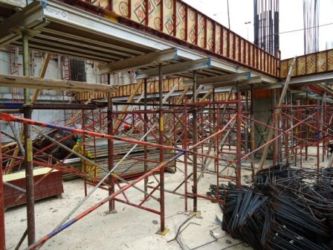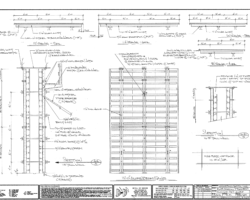The Importance Of Concrete Forms In Concrete Formwork Design
For the best in concrete formwork detailing call Harry Stamaty at 614-870-5144 or visit http://concreteformworkdesigns.com.
Types Of Concrete Forms
Understanding the importance of concrete forms is really just the start of things. You’ll want to familiarize yourself with what working with concrete forms will involve backwards and forwards. Otherwise, you’re likely going to find yourself being frustrated with your project at every possible turn.
Ask anyone with a certain amount of construction experience, and they’ll tell you that one of the most critical aspects of pouring your own concrete project. There are a number of pitfalls that can doom a concrete project, and leave you with nothing but that awful feeling of having just wasted time, money, and energy. If your formwork is built square, if it fails to be level, or if it has been poorly attached, the end result of your concrete project will look like the formwork.
Formwork is indeed the foundation of your concrete project, and that means you want to ensure that foundation is flawless and sound.
There are a number of things to keep in mind when doing a concrete project. The process of building forms is actually quite straightforward. Assemble the necessary tools, research the work involved as many times as it takes for you to feel as though you can do the job properly, and then get to work. The directions to most concrete projects will be such that if you follow them to the letter, and anyone should be able to do this, the end result will be something you can be proud of.
But it demands repeating again that research is essential. If you’re a first-timer determined to do the job on your own, then make sure you understand everything. Taking concrete formwork seriously, treating it as an integral part of your task will help you to make sure the job is completed correctly.
Concrete Forms And Materials
One of the first things you’re going to be learning about is forms and materials. There is a variety of materials that can be used for concrete formwork, and it’s a good idea to be aware of all of them. The one that is best for you will depend largely on what type of project you’re planning.
Basically, the more concrete you’re working with, the tougher your formwork needs to be. There are a number of wood and metal options that help you. For example, a four-inch concrete slab would probably be fine with 2X4 lumber. Thicker concrete slabs will require wider lumber. Don’t be afraid to ask someone with more experience for advice on this.
To put it another way, concrete forms are determined by where they will be used, and then by how they will be used. The purpose of the project will often inform the purpose of the pour size, the amount of concrete that needs to be there for the shape to retain, and how much pressure or weight is going to be pushing against the form.
Understanding this will help you to determine the concrete formwork design you’re going to want to utilize in your project.







